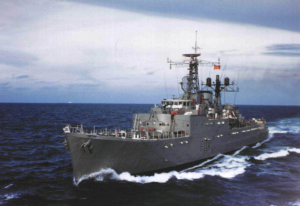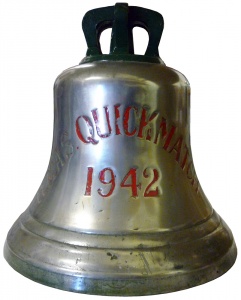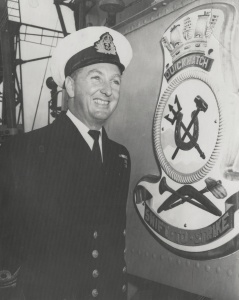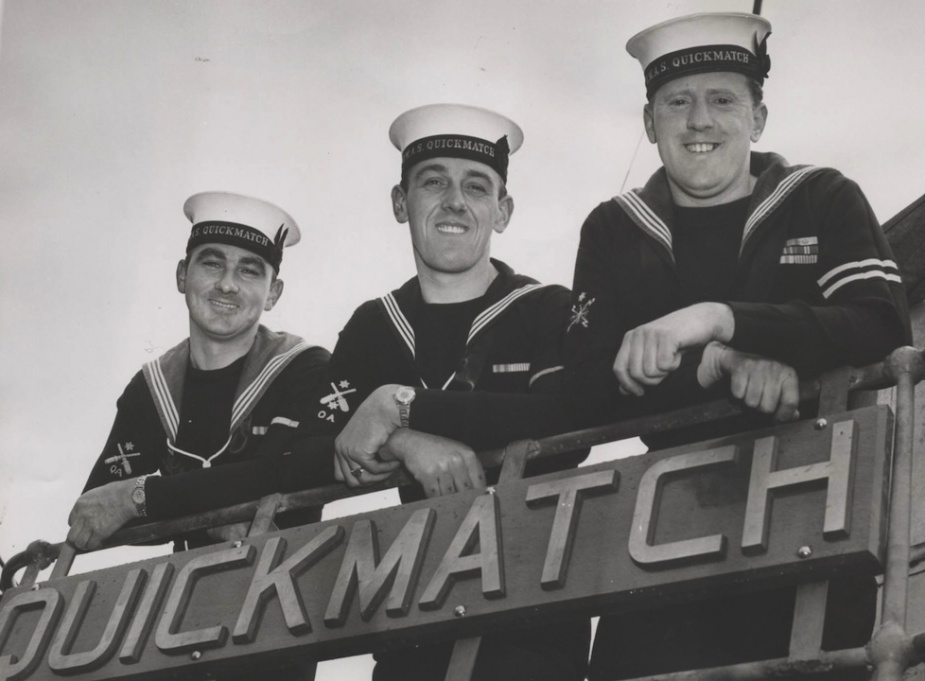HMAS Quickmatch
| Class |
Q Class |
|---|---|
| Type |
Destroyer/Anti-submarine Frigate |
| Pennant |
G92 |
| Builder |
J Samuel White & Co Ltd, Cowes, Isle of Wright, England |
| Laid Down |
6 February 1941 |
| Launched |
11 April 1941 |
| Launched by |
Mrs Shearman |
| Commissioned |
14 September 1942 |
| Decommissioned |
26 April 1963 |
| Dimensions & Displacement | |
| Displacement |
|
| Length | 358 feet 9 inches |
| Beam | 35 feet 9 inches |
| Draught | 9 feet 6 inches |
| Performance | |
| Speed | 31 knots |
| Complement | |
| Crew | 220 |
| Propulsion | |
| Machinery | Parsons geared turbines, 2 shafts |
| Horsepower | 40,000 |
| Armament | |
| Guns |
|
| Torpedoes | 8 x 21-inch torpedo tubes (as destroyer) |
| Other Armament | 2 triple barrel depth charge mortars (as frigate) |
| Awards | |
| Battle Honours | |
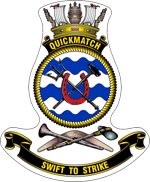
HMAS Quickmatch was one of eight Q Class destroyers built for the Royal Navy, although Quickmatch was commissioned in the Royal Australian Navy at Cowes, Isle of Wight, on 14 September 1942 under the command of Lieutenant Commander Rodney Rhoades, DSC RAN.
After trials the ship commenced convoy escort duty on 5 October 1942. In November 1942 she proceeded to the South Atlantic Station for further convoy escort duty and en route, on 1 December, she intercepted and captured the Italian blockade runner Cortelazzo. Following four months convoy duty on the South Atlantic Station Quickmatch transferred to the Indian Ocean for similar duty, although she was detached to the South Atlantic Station during June, July and August 1943.
In May 1944 Quickmatch was included in the main force of the British Eastern Fleet, based at Trincomalee Ceylon, which carried out a successful carrier borne air attack (Operation TRANSOM) on the Japanese base at Surabaya on 17 May.
This action was followed on 21 June 1944 by a similar assault, from the air, on Port Blair in the Andaman Islands. During these operations Quickmatch was a unit of the 4th Destroyer Flotilla undertaking escort duties to prevent any Japanese surface units attacking the aircraft carriers of the Eastern Fleet. On 25 July 1944 Quickmatch was part of Operation CRIMSON which was an attack on the port of Sabang by the British Eastern Fleet. The destroyer was part of an inshore force that entered Sabang Harbour, Sumatra, carrying out a close range bombardment of Japanese port installations. Quickmatch fired several hundred rounds during this action and escaped without damage or casualties. Her Commanding Officer, Commander Otto Becher, DSC, RAN was awarded a bar to his DSC and several other members of the ships company were also decorated.
In October 1944 Quickmatch arrived in Australian waters for the first time. After visiting Espiritu Santo in the New Hebrides she commenced her annual refit at Sydney (November to December 1944). Following the refit Quickmatch served mainly in Australian waters, with a visit to New Zealand, until March 1945. She then proceeded to Southeast Asia as a unit of the British Pacific Fleet as one of the ships screening the Royal Navy carriers whose task it was to neutralise Japanese air fields in support of the United States invasion in Okinawa (Operation ICEBERG). In July, again screening carriers of the British Pacific Fleet, she took part in further assaults on the Japanese home islands. When hostilities ceased on 15 August 1945, Quickmatch was en route to Manus after operating in support of attacks on the main Japanese island of Honshu. She had steamed some 224,000 miles on war service.
In the early post war years Quickmatch remained in seagoing service in Australian waters, interspersed with several tours of duty in Japanese and Korean waters. In July 1948 she returned to Sydney following three months as the Australian Squadron representative in Japan and was placed in immobilised commission. She paid off on 15 May 1950.
On 28 March 1951 Quickmatch was towed by the tug HMAS Reserve to Williamstown Naval Dockyard where work commenced on her conversion to a modern fast anti-submarine frigate. The conversion was completed in 1955 and she recommissioned on 23 September 1955 under the command of Lieutenant Commander Duncan H Stevens RAN, as a unit of the 1st Frigate Squadron. When completed by the conversion of three sister ships from destroyers to frigates, the Squadron comprised HMA Ships Quadrant, Queenborough, Quiberon and Quickmatch.

